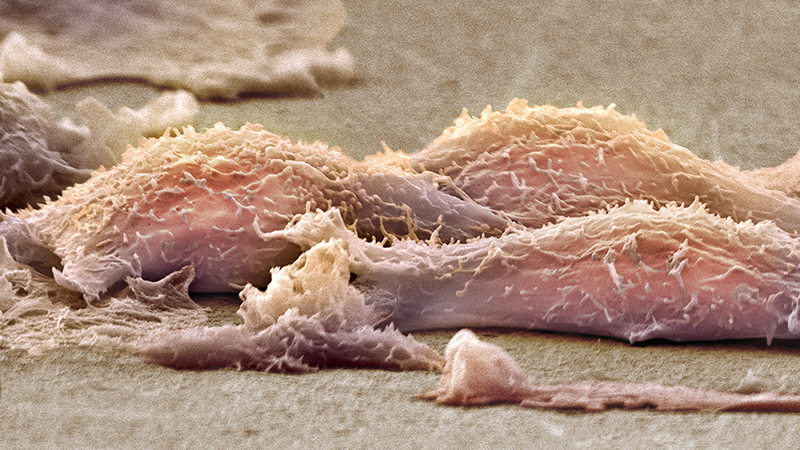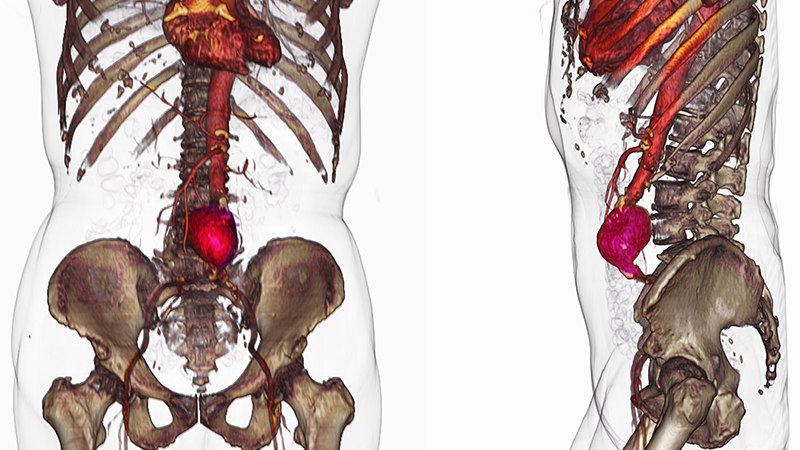9 Health Issues Every Woman Should Understand
Manage Your Risk
Updated May 2024
Scientists are increasing their understanding of the difference between the health needs of men and women.* The truth is, your assigned sex at birth impacts the likelihood that certain health concerns will affect you. Sex assigned at birth is the biological and anatomical status assigned when someone is born. It is based on their anatomy and other characteristics.
Here are some of the most common health concerns impacting women and what you can do to manage your risk:
1. Heart disease.
Heart disease is the No. 1 cause of death for women.
Symptoms of a heart attack include:
- Chest pain
- Shortness of breath
- Weakness in arms
They are also likely to experience nausea or vomiting as a heart attack symptom.
And while menopause does not cause heart disease, certain risk factors are more common after menopause, such as higher blood pressure and cholesterol, and lower estrogen.
2. Stroke.
More women die from stroke than men. There are two types of stroke: hemorrhagic, or bleeding in the brain, and ischemic, or the blockage of a blood vessel that causes impaired blood flow. Although symptoms may vary depending on the underlying cause, hallmark symptoms of a stroke include difficulty with speech and numbness of the arms and legs.
There is also a link between pregnancy and stroke. Preeclampsia, a condition characterized by high blood pressure during pregnancy, can increase your risk for stroke. Neurologic events where blood clot disorders are more likely to happen because of hypercoagulation, or excessive blood clotting, can also occur during pregnancy. These blood clots can then restrict blood flow to your brain.
3. Diabetes.
Although diabetes is certainly not exclusive to women, it does increase the risk for heart disease by four times in women. Women are also more susceptible to diabetes-related complications, such as blindness, kidney disease and depression. Gestational diabetes is a condition that can occur during pregnancy in which your glucose level goes up and other complications develop. This occurs in at least 3 out of every 100 women, and treatment may include a healthy diet, exercise, blood glucose monitoring, insulin injections and oral medication.
Diabetes can also cause difficulties during pregnancy, including miscarriage and birth defects. Special testing and monitoring may be needed for pregnant people who have diabetes, particularly those dependent on insulin. To lower your risk for Type 2 diabetes, try to maintain a healthy weight, exercise and quit smoking.
4. Maternal health issues.
From iron-deficiency anemia to high blood pressure, the changes a person experiences during pregnancy can impact their health.
“Preconception care is important, whether or not you have medical conditions,” says Jessica W. Kiley, MD, an obstetrician and gynecologist at Northwestern Memorial Hospital. “For example, people with diabetes or high blood pressure should have these conditions under the best control possible when they plan to conceive.” Those with high-risk conditions, like major cardiac disorders and neurological issues, should discuss their care plan with their physician. In addition, you should not conceive immediately after having weight loss surgery.
During pregnancy, Dr. Kiley suggests making sure you have adequate nutrition and take preventive measures by getting the appropriate immunizations. You may continue to exercise as normal but consult your physician if you have any questions. “Some people are reluctant to take medication during pregnancy,” says Dr. Kiley. “Many conditions require treatment with medication and could harm you if left untreated. It’s an important conversation you should have with your care provider.”
5. Urinary tract infections.
Urinary tract infections (UTIs) occur when germs get into the urethra and start to multiply. UTIs are particularly common in people assigned female at birth, as they have a shorter urethra than men. This decreases the length bacteria have to travel to reach the bladder. Symptoms of a UTI include frequent urination, pain or burning when urinating, and cloudy urine. While a UTI can go away on its own, a physician can prescribe antibiotics if necessary. If UTIs become a recurring problem, other tests can reveal if the urinary tract is normal.
6. HPV.
There are more than 30 types of sexually transmitted infections (STIs). One of the most common, human papillomavirus (HPV), can be prevented with the HPV vaccine.
About 80% of sexually active men and women will be infected with HPV at some point in their lives. “HPV is incredibly common. There are more than 100 types, with at least 14 linked to cancer,” says Dr. Kiley. The major significant high-risk types in the United States are types 16 and 18, both of which are associated with precancer of the cervix.
Cervical cancer was once one of the most common causes of death in women. With use of the Pap test or HPV screening, clinicians can detect precancerous cells and deliver treatment to eliminate them, dramatically reducing the rate of cervical cancer. Dr. Kiley adds, “The purpose is to detect a high-risk abnormality before it becomes cancerous.” If significant precancer is detected, a loop electrosurgical excision procedure (LEEP) can eliminate precancerous cells from the cervix.
7. Breast cancer.
Second only to skin cancer, breast cancer is the most common cancer in women in the U.S. In fact, women in the U.S. have a 13% chance of developing breast cancer in their lifetime.
Breast awareness can help you identify any changes in your breasts to share with your primary provider. This is in addition to following your yearly scheduled mammogram, which should start at age 40. For those who carry the BRCA1 and BRCA2 genes, which increase the risk for breast cancer, your physician might recommend earlier screening. You can manage risks by making healthy lifestyle choices, such as exercising and quitting smoking.
8. Osteoporosis.
Osteoporosis is a disease that causes your bones to weaken, making them susceptible to fractures. Postmenopausal people are at higher risk for fractures associated with osteoporosis. Other risk factors can include certain medications, early menopause, a low body mass index (BMI), cancer treatment and genetics. You can offset these risks by increasing your calcium intake, staying active with appropriate weight-bearing exercises, and avoiding smoking and excessive alcohol use.
9. Alzheimer’s disease.
Alzheimer’s disease is a form of brain degeneration in which abnormal particles called neurofibrillary tangles and plaques form in the brain and destroy healthy brain cells. Of the 6 million Americans living with Alzheimer’s disease, more than two-thirds are women. While this has historically been thought to be a result of women living longer, scientists are studying whether it could also be related to genetic variations. Healthy lifestyle choices, like staying active and eating a healthy diet, can help promote optimal brain health.
Learn more about health screenings for every age.
*Scientists do not always collect information from participants about gender identity. To avoid misrepresenting the results of this research, we use the same terminology as the study authors.






